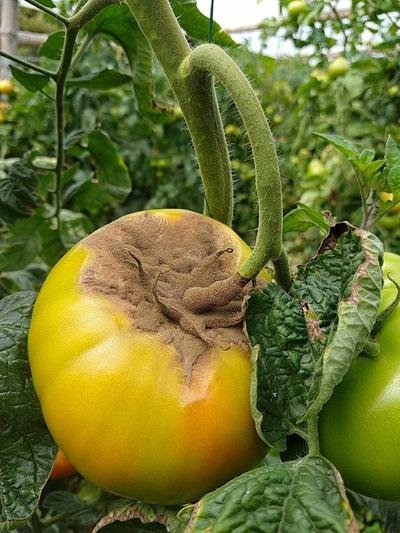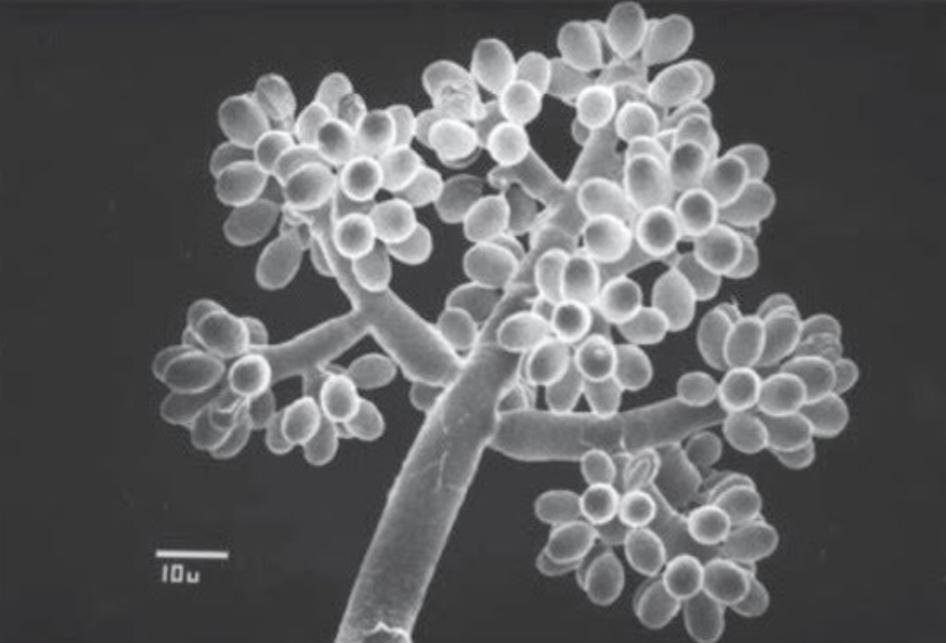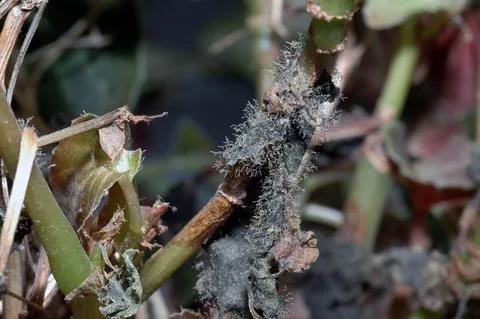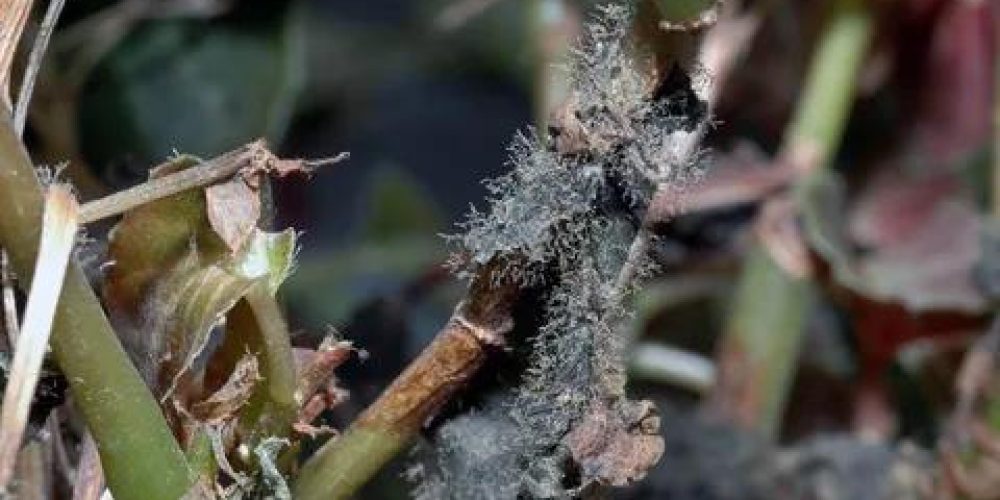Table of contents of the article
Toggle

Botrytis mold (gray mold) is considered one of the most dangerous fungal diseases that affect many crops, including tomatoes. In this article on your website, World of Plants, we review methods of prevention and treatment to protect tomato crops.
Symptoms and harms of Botrytis mold (gray mold)
- Symptoms of the disease appear on the leaves, stems, and fruits in various forms. The disease appears in the form of yellow spots on the upper surface of the leaves, spores, and fungus pods that give the appearance of gray mold.
- Clear ulcers appear on the leg with overlapping rings. Mold and spots appear on ripe fruits in the form of light brown or gray spots saturated with water that develop until the fruit rots and falls.
Comments about Botrytis mold (gray mold)
- The causative agent: the fungus Botrytis cinerea. Previously, it was classified as an imperfect fungus, but in the new classification it has become an ascomycete fungus.
- The disease spreads in winter when humidity is high, especially inside uncovered greenhouses, as well as during transportation and storage
Prevention and treatment against Botrytis mold (gray mold)
Botrytis rot of tomatoes is prevented by:
- Controlling the fungus that causes this disease (Botrytis).
- Use tomato varieties that can coexist with the disease.
- Good ventilation, removing infected leaves, and reducing plants inside covered houses to avoid high heat and humidity.
- Get rid of the infected parts, burn them, and avoid throwing them on top of organic fertilizer blocks.
- Take care of plants and avoid watering during late hours of the day.
- Local treatment of wounds or kidneys, depending on the degree of injury.
- Daily picking of flowers, and disinfecting refrigerators.
Control of Botrytis mold (gray mold)
- The best way to combat the disease is to obtain varieties resistant to gray mold, raise the temperature in the greenhouse to more than 25 degrees Celsius, reduce the humidity level, and reduce the number of plants, as the best temperature for infection to occur is 18-24 degrees Celsius with the presence of free water or high humidity for spore germination. It is considered Ventilating the greenhouse is very important to prevent water condensation on the leaves and stems.
- Infection occurs through direct penetration or through wounds, but wounds greatly help to speed up the spread of the disease
- All pesticides used are considered non-curative, but only preventive, as they help prevent the spread of the disease, but are not effective in treating leg ulcers.
- Several pesticides are used to combat the disease. The same pesticide should not be used repeatedly, as the fungus acquires resistance to the pesticide that is used repeatedly.
Sources of infection with Botrytis mold (gray mold)
Mushroom spores on infected plant remains and in the soil, which are transmitted by wind, agricultural tools, insects, birds, and others.
Overview of Botrytis Mold (Gray Mold)
- Massive dark gray growths can be observed on the leaves, fruits or pods.
- The presence of spots of fungal growth on the tissues.
- Parts of the plant or the plant as a whole may wither, turn brown, and die (drop).
- Occasionally, shoot dieback and canker formation are observed on woody trees.
Organic control of botrytis mold (gray mold)
Biocides containing competitive fungicides are effective against gray mold Trichoderma harzianum on a wide range of crops. Streptomyces griseovirides based products are also available for use on lettuce.
Chemical control of Botrytis mold (gray mold)
- Always follow integrated approaches with preventive measures together with biological resistance, if available. Controlling this fungus is difficult because it may colonize host plants near the time of harvest, and therefore the use of chemicals that leave toxic effects is prohibited. In case of early infection.
- Foliar sprays with chlorothalonil can be used to control its spread. Other fungicides containing fluazinam and thiophantemethyl can also be effective. The development of resistance may be common when fungicides are used extensively.
Cause of botrytis mold (gray mold)
These symptoms are caused by the soil-borne fungus Botrytis cinerea, which can grow and infect all parts of the plant. The onset of symptoms is enhanced by the presence of humid weather with frequent rainfall and cool temperatures. The optimum temperature recorded for fungal growth, plant colonization and disease development is 15 to 20°C. Symptoms first appear on leaves or plant parts that have been mechanically injured during field work or through hail or frost. The lower leaves are most susceptible to infection. Excessive watering and dense shade may increase the level of the disease by providing a moist, dense environment conducive to fungal growth.
Preventive measures for Botrytis mold (gray mold)
- Use sound planting materials from approved sources.
- Resistant plants or tolerant varieties of crops.
- Early or early maturing plant varieties.
- Maintain a reasonable distance between plants.
- Ensure the plants are lined up straight.
- Use mulch to weaken the fungal life cycle and reduce inoculum.
- Ensure good drainage of the site and avoid inappropriate irrigation.
- Do not over fertilize crops.
- Be careful not to injure plants when working in this field.
- Monitor the field and remove decaying plant tissue.
In conclusion, we would like to note that we, at the world of plants website, offer you all the necessary services in the world of plants, we provide all farmers and those interested in plants with three main services::-
- Artificial intelligence consulting service to help you identify diseases that affect plants and how to deal with them.
- Blog about plants, plant diseases and care of various crops ... You are currently browsing one of her articles right now.
- An application that provides agricultural consultations to clients, as well as a service for imaging diseases and knowing their treatment for free – Click to download the Android version from Google Play Store، Click to download the IOS version from the Apple App Store.

References




